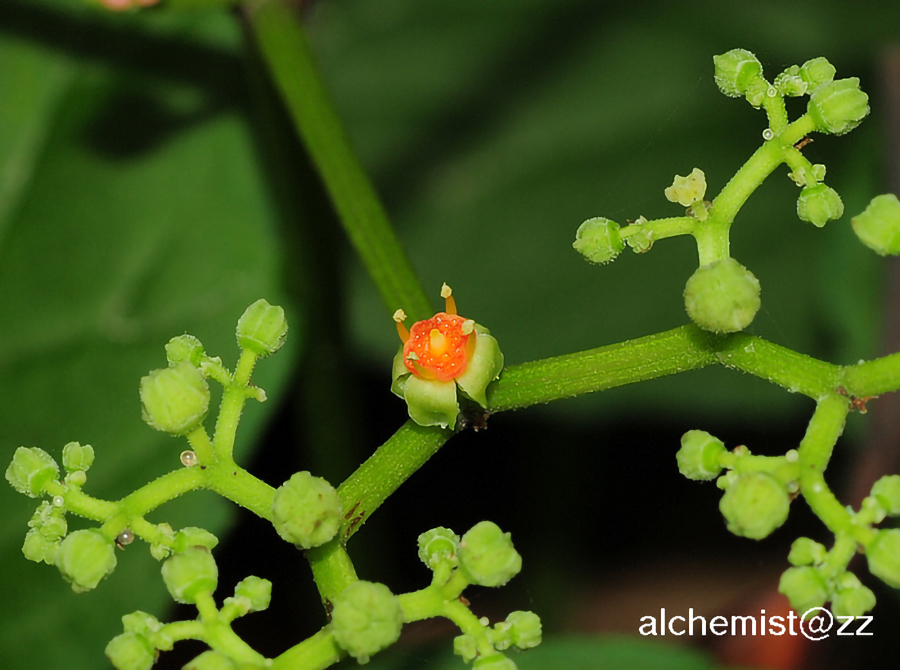- Scientific Name: Cayratia japonica (Thunberg) Gagnepain
- Ref: Notul. Syst. (Paris). 1: 349. 1911.
- English Common Name: bushkiller, Japanese cayratia herb
- Chinese Common Name: 乌蔹莓 wūliǎnméi
- Family: Vitaceae
- Genus: Cayratia
- Distribution: Forests, shrublands, valleys, grassy areas, fields, disturbed areas, roadsides; 300-2500 m. Anhui, Chongqing, Fujian, Gansu, Guangdong, Guangxi, Guizhou, Hainan, Hebei, Henan, Hunan, Jiangsu, Shaanxi, Shandong, Sichuan, Taiwan, Yunnan, Zhejiang [Bhutan, India, Indonesia, Japan, Korea, Laos, Malaysia, Myanmar, Nepal, Philippines, Thailand, Vietnam; Australia].
Vines, herbaceous. Branchlets terete, with longitudinal ridges; tendrils 2- or 3-furcate. Leaves pedately 5-foliolate, or sometimes 3-foliolate; stipules caducous; petiole 1.5-10 cm; central petiolule 0.5-2.5 cm, lateral petiolules short or lateral leaflets sessile, petiolules of lateral leaflet complex 0.5-1.5 cm; leaflets with lateral veins 5-9 pairs, veinlets inconspicuous; central leaflet elliptic or elliptic-lanceolate, 2.5-14.5 × 1.5-4.5 cm, base cuneate, apex acute or acuminate; lateral leaflets elliptic or narrowly so, 1-7 × 0.5-3.5 cm, base cuneate or subrounded, margin 6-15-toothed on each side, apex acute or rounded. Compound dichasium axillary; peduncle 1-13 cm. Pedicel 1-2 mm. Buds oval, 1-2 mm, apex rounded. Calyx cupular, papillose or nearly glabrous, margin entire or undulate. Petals triangular-oval, 1-1.5 mm, papillose. Anthers oval. Lower part of ovary adnate to disk. Berry globose, ca. 1 cm in diam., 2-4-seeded. Seeds triangular-obovoid, base rostrate, apex retuse, surface with ribs, ventral holes semicircular, extending from base to near apex. Fl. Mar-Aug, fr. Jul-Jan. 2n = 40*. (Flora of China)
